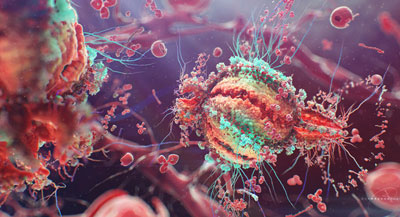Bristol-Myers Squibb presents promising Phase IIb data for novel, investigational attachment inhibitor for HIV-1 infected treatment-experienced patients
Posted: 6 March 2014 | Bristol-Myers Squibb Company | No comments yet
Bristol-Myers Squibb Company presented 24-week Phase IIb data that demonstrated similar response rates for its investigational compound…


Bristol-Myers Squibb Company (NYSE:BMY) today presented 24-week Phase IIb data that demonstrated similar response rates (HIV-1 RNA <50 c/mL) for its investigational compound, BMS-663068, when compared to a boosted protease inhibitor, Reyataz® (atazanavir sulfate) with ritonavir. Among HIV-1 infected treatment-experienced patients receiving BMS-663068, 69-80% had HIV-1 RNA levels of <50 c/mL (a measure indicating virus replication is undetectable), compared to 75% of patients taking Reyataz with ritonavir. Presented at the 21st Conference on Retroviruses and Opportunistic Infections (CROI) today, this study highlights the unique mechanism of action of the investigational prodrug BMS-663068, which when converted into BMS-626529, a novel attachment inhibitor, prevents initial viral attachment to the host CD4+ T cell and entry into the host immune cell.
Globally, there are 34 million people who are infected with HIV. Due to significant scientific advances in management of HIV treatment over the last 20 years, patients are now living with HIV for a longer period of time and some patients have developed resistance to existing regimens or are unable to tolerate current available treatments. Additional treatment options, especially in new drug classes, are needed both today and into the future for these patients.
“By targeting the virus at an earlier step of the viral lifecycle, BMS-663068 disrupts the virus in a way unlike existing antiretroviral agents,” said Jacob P. Lalezari, M.D., director of Quest Clinical Research and assistant clinical professor of medicine at UCSF/Mount Zion Hospital. “The data suggest that BMS-663068 is potentially as effective as one of the current standards of care and may provide another method of suppressing the virus in treatment-experienced patients who have failed a prior HIV regimen and need new treatment options.”
Study Design and Results
In this active-controlled Phase IIb study, treatment-experienced HIV-1 infected adults (n=254) were randomized equally to one of four BMS-663068 treatment arms: (400 mg BID (twice daily); 800 mg BID; 600 mg QD (once daily); 1200 mg QD) and, a control group of Reyataz® (atazanavir sulfate) and ritonavir (300/100 mg QD). Each treatment arm and the control group also included raltegravir (RAL) 400 mg BID and tenofovir disoproxil fumarate (TDF) 300 mg QD. The primary endpoints were the proportion of subjects with HIV-1 RNA <50 c/mL at week 24 and the frequency of serious adverse events (SAEs) and adverse events (AEs) leading to discontinuation through week 24.
Through week 24, BMS-663068 showed similar efficacy compared to Reyataz and ritonavir for treatment-experienced patients infected with HIV-1. Specifically, 69-80% of patients in the four treatment arms had HIV-1 RNA levels <50 c/mL, indicating virus replication was undetectable, compared to 75% of patients in the control group.
BMS-663068 was generally well-tolerated during the study, with no serious adverse events attributed to BMS-663068 nor any adverse events leading to discontinuation. The incidence of Grade 2-4 related AEs across BMS-663068 arms ranged from 3.9% to 12%, vs. 27.5% in the comparator arm (atazanavir sulfate and ritonavir) and no causal association was observed between adverse events and BMS-663068 dose.
“These study results are encouraging and support further development of BMS-663068 as we continue to look for ways to treat people living with HIV, especially those who have exhausted available therapies and are difficult to treat,” said Douglas Manion, M.D., senior vice president, Development, Virology, Bristol-Myers Squibb. “Bristol-Myers Squibb is committed to the fight against HIV and continues to study treatments with novel mechanisms of action in hopes of addressing the unmet needs of both patients recently diagnosed with HIV, treatment-naïve and treatment-experienced HIV-infected individuals throughout the world.”
Related topics
Antiretroviral Therapies
Related conditions
HIV
Related organisations
Bristol-Myers Squibb



